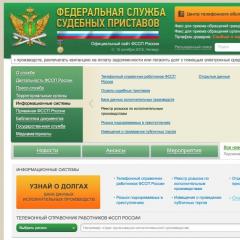How to flash documents with threads in three holes and number them correctly: instruction, sample, photo
Entrepreneurs and office workers in their work are faced with the need for the correct execution of multi-page documents. Regulatory authorities and higher organizations, as you know, are meticulous about the design of business papers, and therefore sometimes difficulties arise. Let's figure out how to properly flash and number documents so that there are no unnecessary questions when submitting them.
Who handles the paperwork?
It seems that there is nothing complicated in flashing papers. But in fact, not everything is so simple. There are certain rules by which this is done. If you want to make a binder of newspapers or magazines for use within the organization, then this is one thing. But if you are faced with the task of preparing documents for the archive or the tax office, or somewhere else, then you need to approach the work with all responsibility, otherwise you risk getting the papers back. The reason for the refusal may be incorrect registration.
There are many such cases. And all due to the fact that we do not know how to properly flash and number documents. A sample design is unlikely to be provided in the tax or archive.
Now there are a sufficient number of firms involved in the firmware of documents. You can use their services. They certainly have a lot of experience. They offer a wide range of covers. But this is not always convenient. The fact is that printing houses are overflowing with orders. Let's say you need to do this job urgently. How then to be? It remains only to deal with this issue.

In addition, in conditions of economy, management is not always ready to pay extra expenses, and therefore this type of work falls on the shoulders of secretaries and accountants. So, it’s better to figure it out yourself once, so that there are no problems in the future. This knowledge may come in handy.
Help for beginners
We want to note that there are no uniform standards regarding how to flash documents. By the way, state structures also do not give any explanations on this matter. Which means you have to figure it all out yourself. In this we will be helped by the methodological recommendations of office work (order of the Federal Archives of December 23, 2009).
What do you need to flash documents?
Before you start the work itself, you need to prepare. You will need the following materials:
- The documents themselves.
- Glue.
- Paper.
- Needle.
- Awl.
- Hole puncher.
- Special threads.
- Company seal.

In general, the whole process can be divided into three stages. The first is preparation, the second is the firmware itself, the third is the certification of the finished document.
Which cover to choose?
Speaking about how to flash documents, you need to remember such a nuance as the design of the cover. Of course, in the printing house you will be offered beautiful options, but they are not always needed if we are not talking about a thesis.
For a small binder, a paper cover will suffice. If a long-term use of the binder is expected (for example, archiving for more than 25 years), then thick cardboard is used.
The cover can be standard size (A4 format) and non-standard. It already depends on the format of the sheets to be bound. The cover must fit the size of the document.
Pagination
When preparing papers for stitching, be sure to number the pages. The presence of numbering is a prerequisite for registration. "What is it for?" - you ask. In order to make it impossible to tear out unnoticed, remove some of the sheets. This moment is very important. So let's talk about how to flash and number documents. There are some nuances here.

When putting down the numbering, you need to remember the rules:
- Sheets are numbered, not pages.
- Only Arabic numerals are used.
- The list of documents itself is not numbered.
- If you need to number a letter, then first a serial number is assigned to the envelope, and only then to each leaflet.
- If the Case is very large (as a rule, such files are archived), then it may consist of volumes, each of which will have its own numbering.
- If there are papers inside the binder on which numbers are already affixed, they should be re-numbered in a single format.
- If there are nested sheets of large sizes (A3), they must be expanded and put a number in the upper right corner. Then fold again. It will be hemmed only at one edge.
- It happens that small documents (checks, certificates, etc.) are pasted onto the sheets. In this case, the sheet is given one number, but at the bottom of it a list of pasted papers is listed.
- When small documents are glued only to the corner, then each of them can be given a number.
- Drawings, diagrams, photographs, plans are also numbered.
To understand how to properly flash and number documents (a sample is given in the article), you need to consider the sequence of actions step by step.
What should I do if there are errors in the numbering?
Before flashing documents, you should make sure that the binder is correctly designed. Look carefully at page numbers. If it turns out that some of them are missing, then you can enter an additional letter numbering. All the sheets will remain under their numbers, and on the missing ones you should write the number from the previous sheet and the letter.
In case of gross errors, it makes sense to carefully cross out what was written and make a correct entry next to it. All changes made must be reflected in the confirmation note.
Document Description
Before flashing documents with threads, it is better to check the correctness of the execution of the entire Case. After all, I would not want to embroider it later. As a rule, there are several packages of papers inside it. Absolutely the entire list must be listed in the inventory. It is compiled by the responsible person, indicating the date. The description is not numbered.
How to sew documents with threads in three holes?
If all the documents are prepared, then you can start flashing. To do this, you need special threads or you can use twine. Of course, it does not make sense to sew several leaves with a harsh thread, you can take a regular one folded in half.
So, let's go directly to the question of how to flash documents with threads. Photos with a detailed description will serve as a visual addition to the algorithm of actions. Let's start with the fact that it is necessary to fasten the sheets so that later you can easily read the information presented on them. To do this, holes are pierced from the left edge, approximately at a distance of one and a half centimeters. There should be three holes. They are located on top of each other. Punctures can be made with a hole punch when the stack of sheets is small. For thick toms, you will need an awl. Prepare the thread, but do not make it too long, seventy centimeters will be enough.
How to flash documents correctly? A sample workflow is shown below. For convenience of explanation, let's assign numbers to the holes: top - 1, middle - 2, bottom - 3.

You need to start sewing from the back of the Case, passing the needle through hole 2 to the front side. In this case, one end of the thread will remain behind. Then, through 1 hole, the needle is again brought to the back. At the moment when the needle and the free end of the thread are behind the document, you need to move again to the front side, and then again to the back.
How to flash documents, we almost figured it out. It remains the case for the small. Once all the sheets are fastened, you can safely tie the threads into a knot on the back of the Case.

It must be tightly tightened so that it can then be sealed with a confirmation note. The ends of the threads must be left hanging freely from under the sticker.
How are documents certified?
Well, as you can see, there is nothing difficult in resolving the issue of how to flash documents with threads. The photos presented to your attention are a direct confirmation of this. We just have to certify the completed sheets.
This is called a "certificate signature". To make it, you need to take a small piece of paper measuring 5 x 6 centimeters and glue it on the back so that it covers the knot. The ends of the thread should come out from under it and hang freely.

On this note you need to indicate how many pages were stitched. Then it is signed by the director, date and seal of the organization. In general, the certification signature is made either by the director of the company, or by one of the deputies. The seal itself is placed so that one part of it falls on the last sheet of the pack, and the other on the note.
Why are documents stitched?
We have already mentioned that filed documents are archived for storage, in addition, in the daily activities of an enterprise, it is very often necessary to fasten bundles of sheets. These can be contracts, and reports to the tax or other regulatory authorities. By the way, the tax authorities generally have very strict requirements in this regard. The use of a stapler is not permitted. This is considered a gross violation.

In general, the Ministry of Finance even gives its own recommendations on how to flash documents. So, the filing cannot be very voluminous. The optimal size is up to fifty pages. If there are a lot of documents, then it is better to break them into several Cases. There must be continuous numbering in Arabic numerals. The leaves are stitched with a coarse thread, which must be tied on the back of the finished document. From above, the knot is sealed with a confirmation note, which must be drawn up in accordance with all the rules. Do not forget that the number of sheets of the Case is affixed on it. For regulatory authorities, the signature in the assurance note is very important. It can only be set by the director or another person who has the authority to do so. All this is certified by a seal. Its print should lie down so as to capture part of the sheet and note. In fact, all these recommendations repeat the information we have presented above. We considered it necessary to bring them, so that you can make sure that you are doing everything correctly, in accordance with the instructions of higher authorities.
The tax authorities make an unambiguous requirement for the integrity and safety of not only the documents themselves, but also copies. Moreover, photocopies are also filed in a separate pack.
Instead of an afterword
We talked in the article about how to properly flash documents with threads for submission to the archive and regulatory authorities. Sometimes disputes arise regarding the design of binders, because there is no document that would give precise explanations on this issue, and even with comments. Therefore, it is necessary to focus on the standards adopted in office work. It must be remembered that the government agencies where you submit papers may have their own requirements for their design. Therefore, it is better to always clarify such information in advance in order to avoid errors and return documentation for revision. After all, everywhere there can be nuances.


